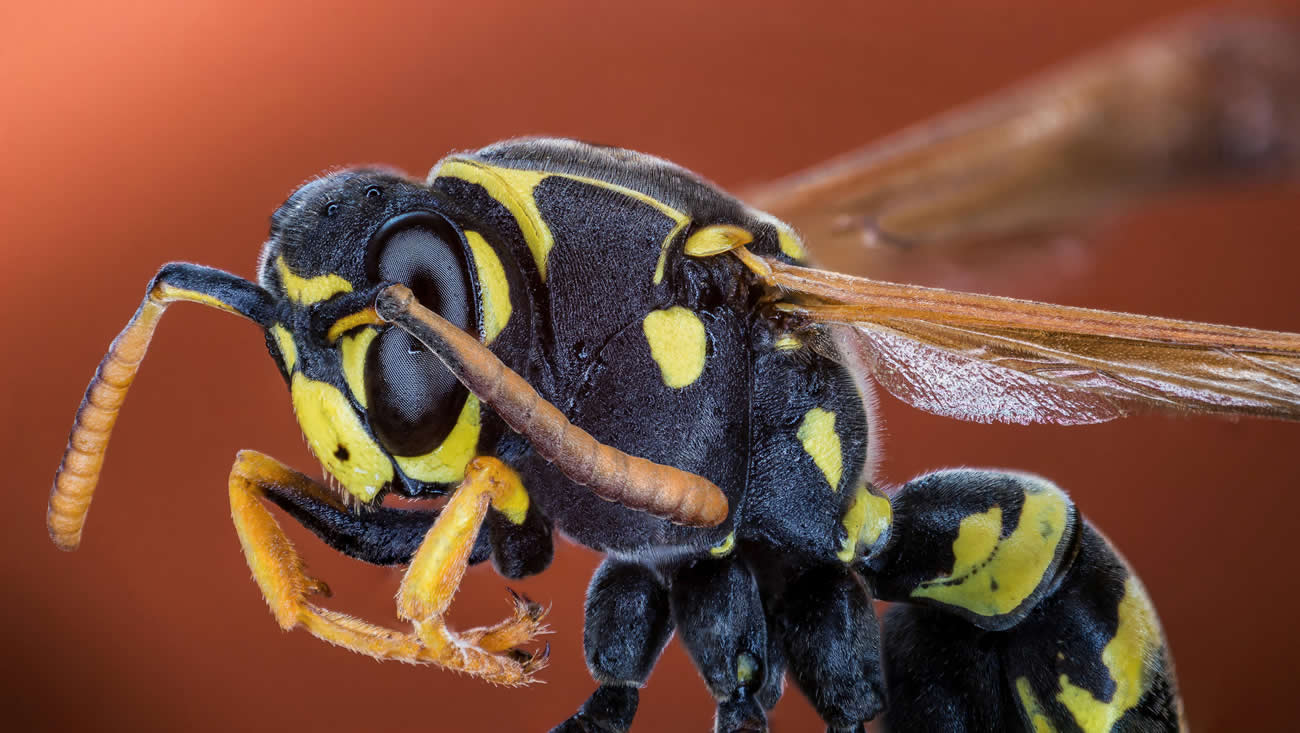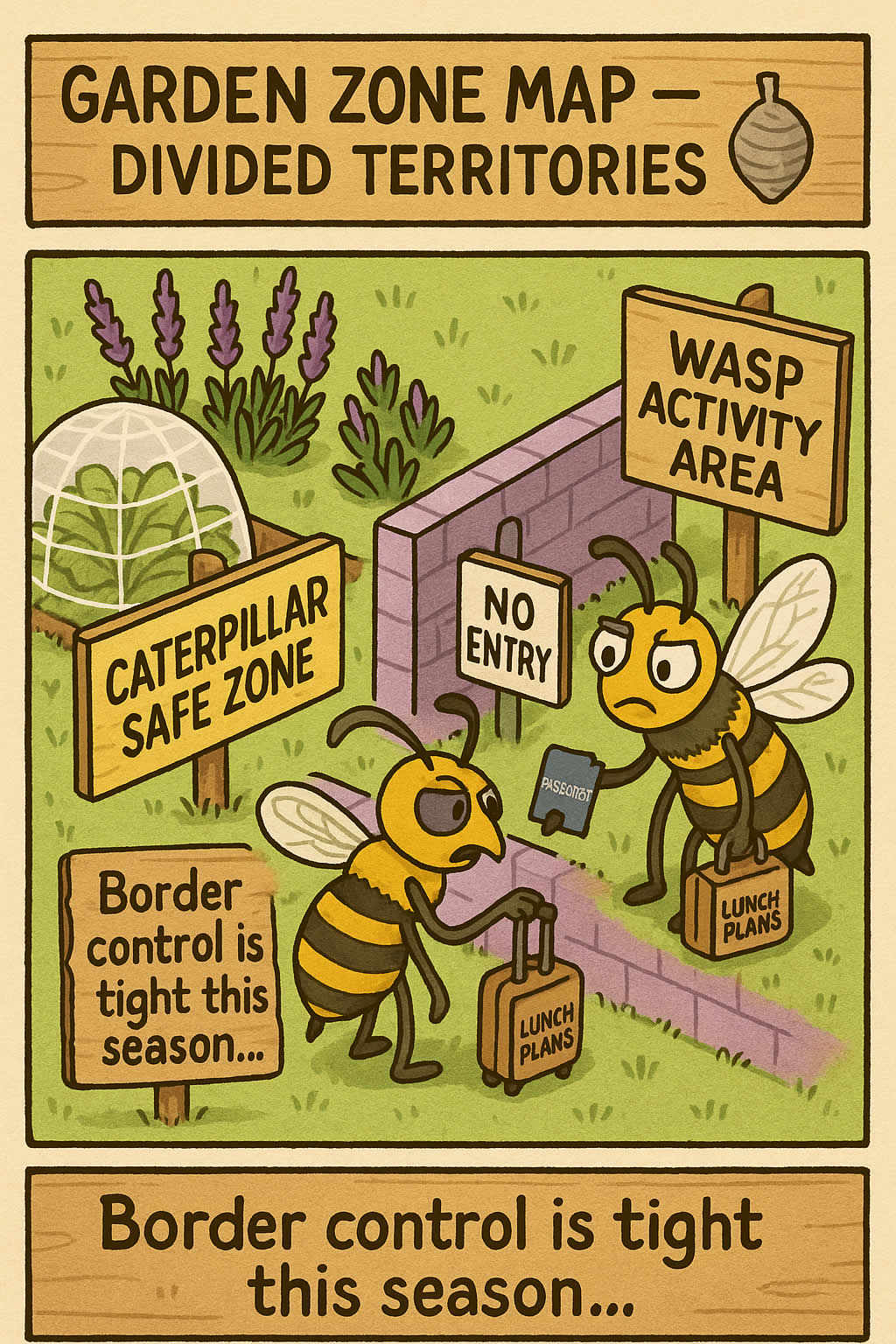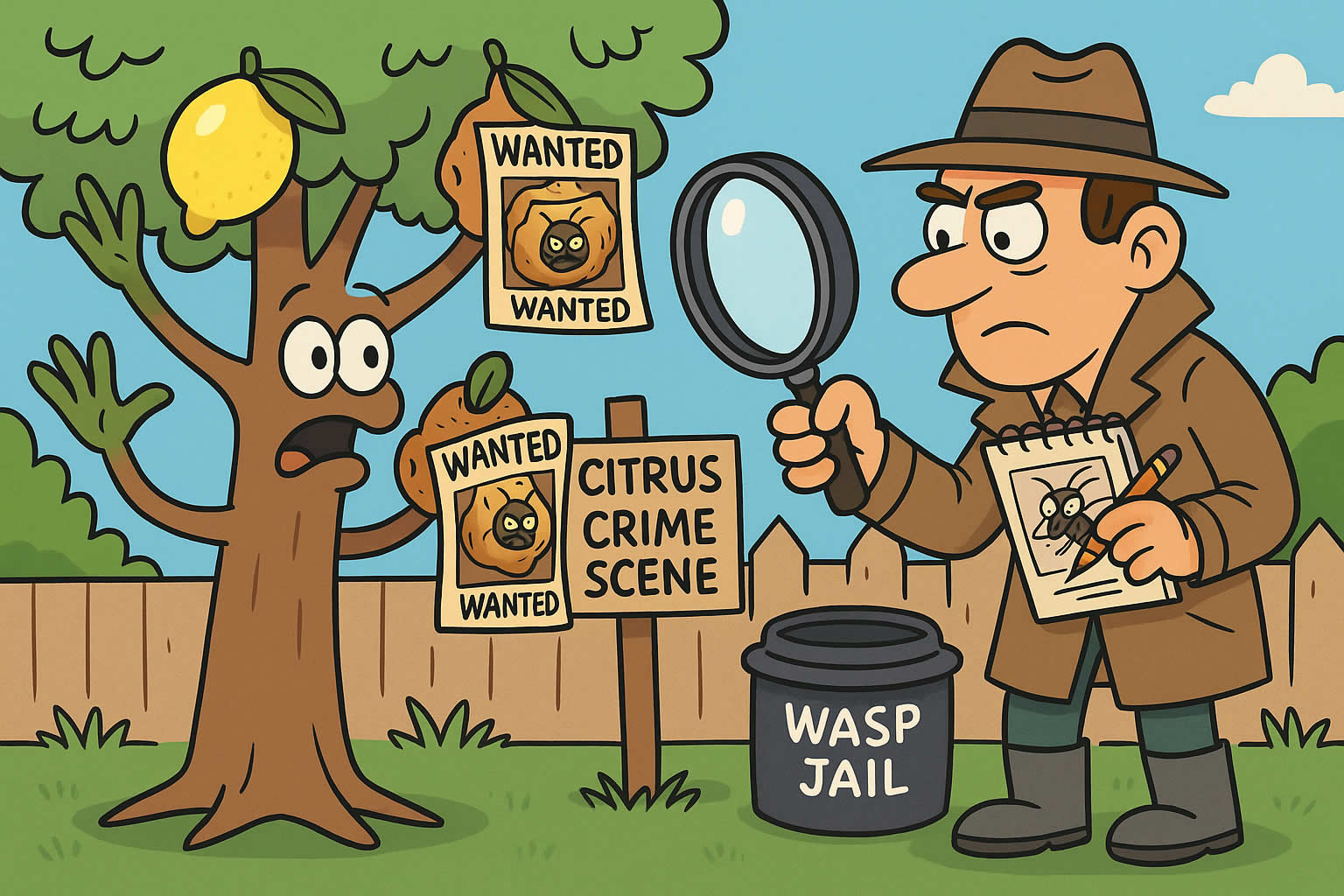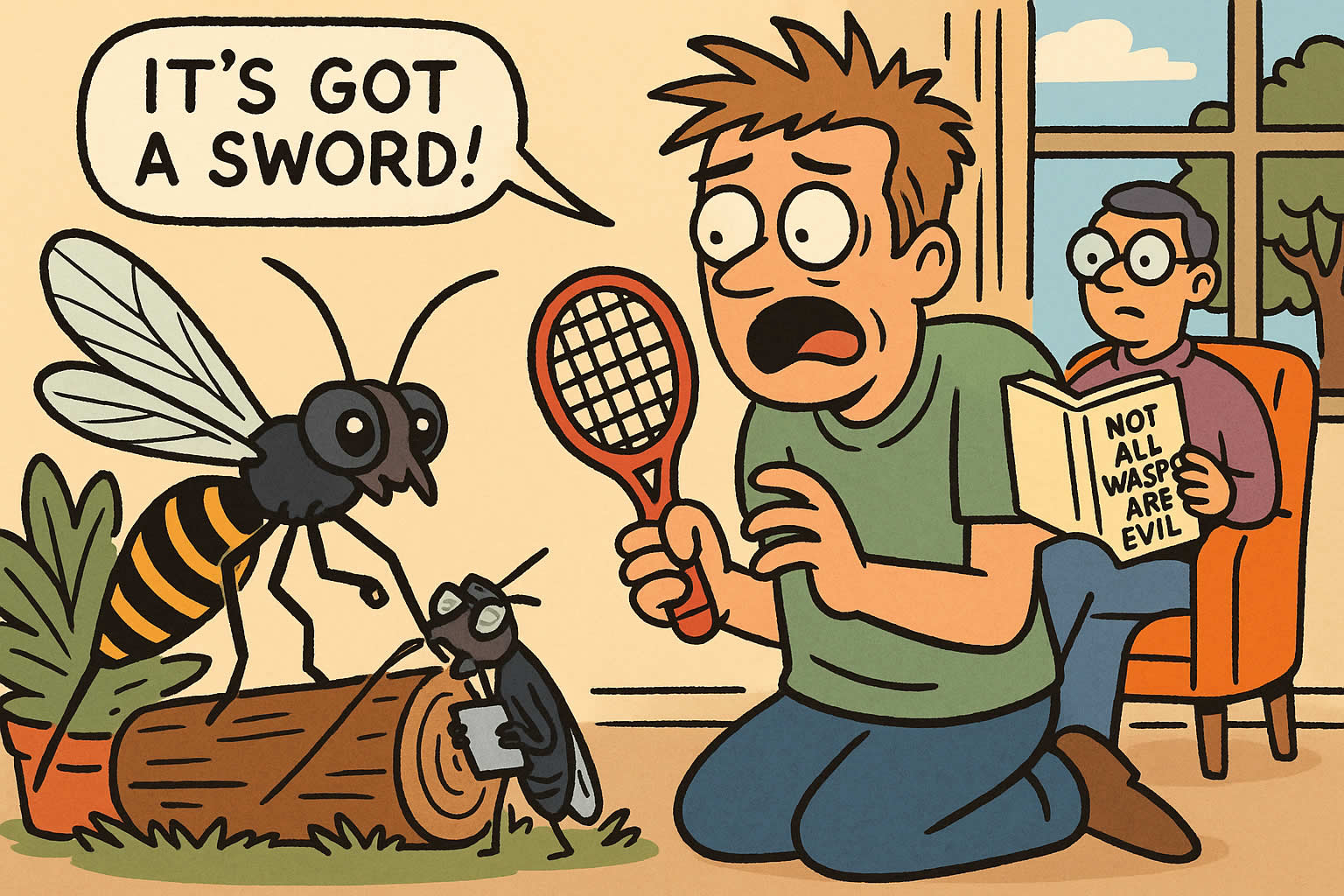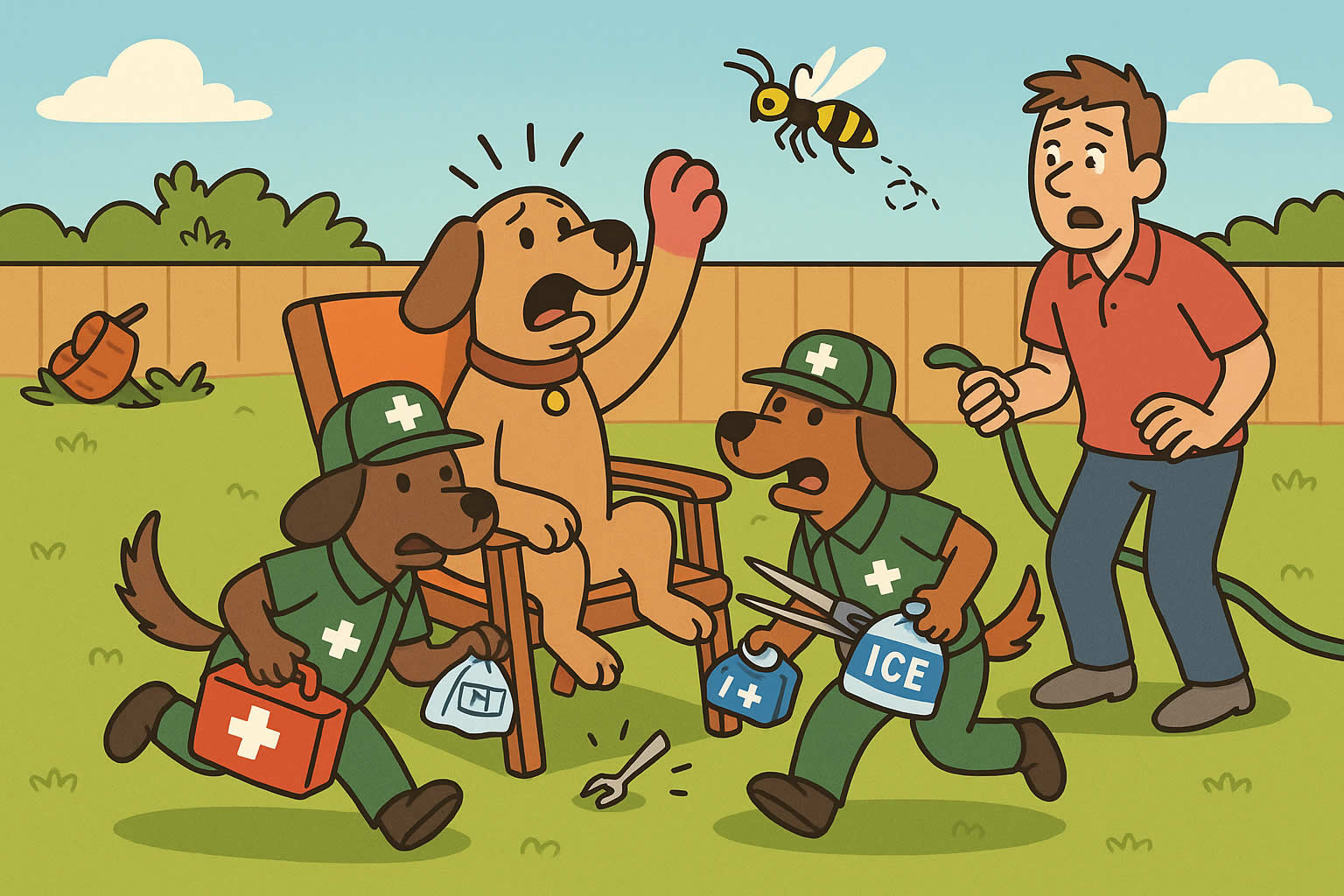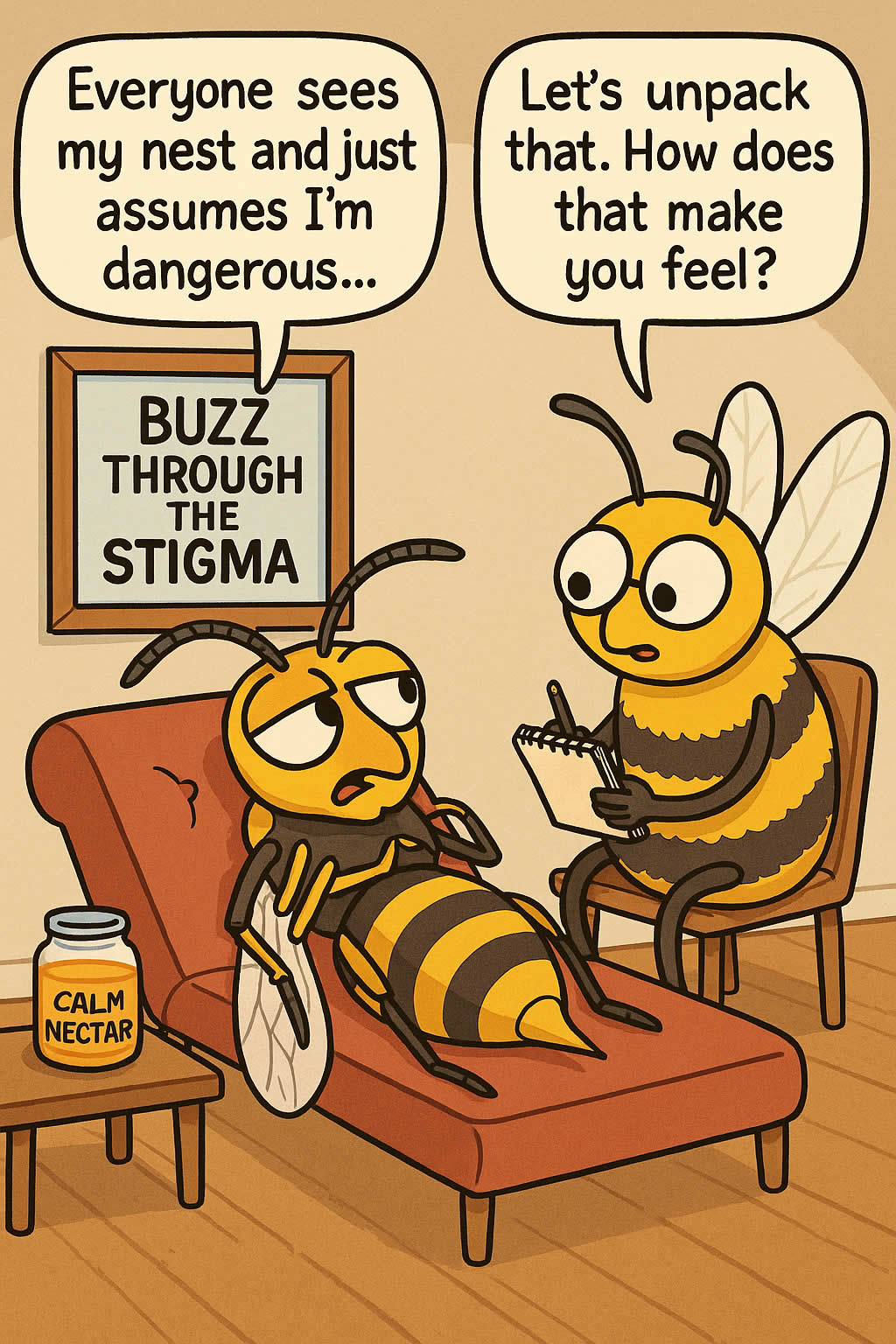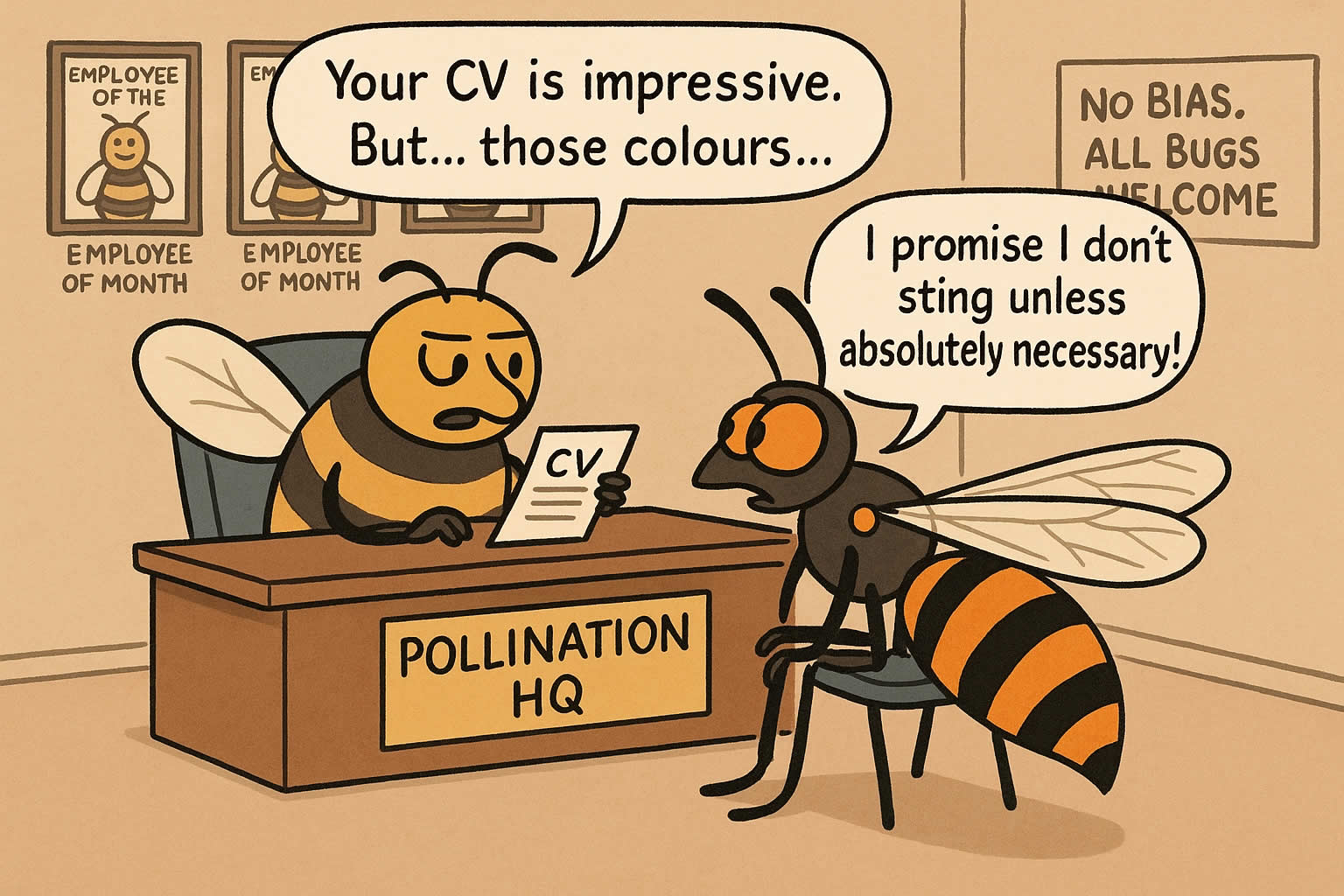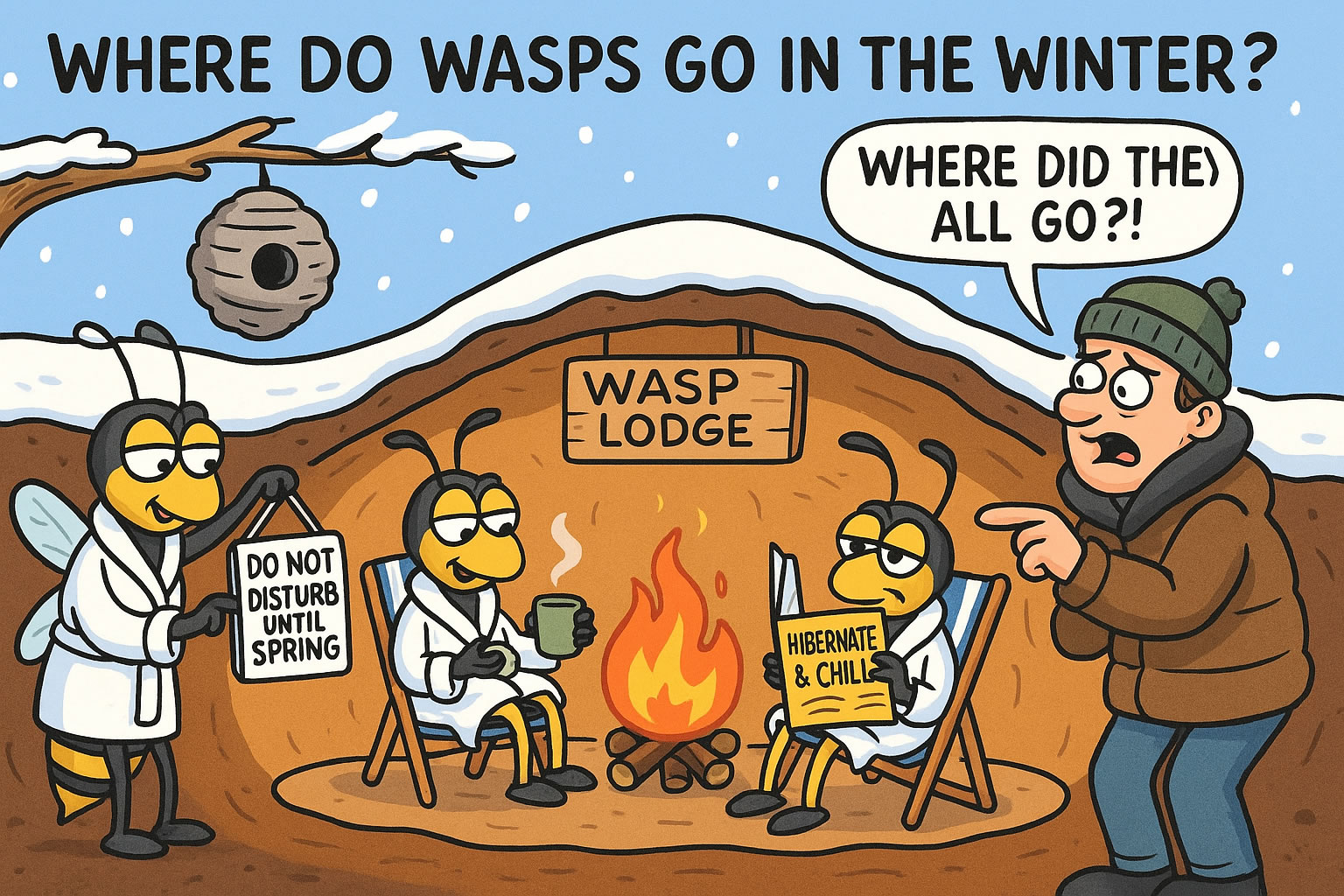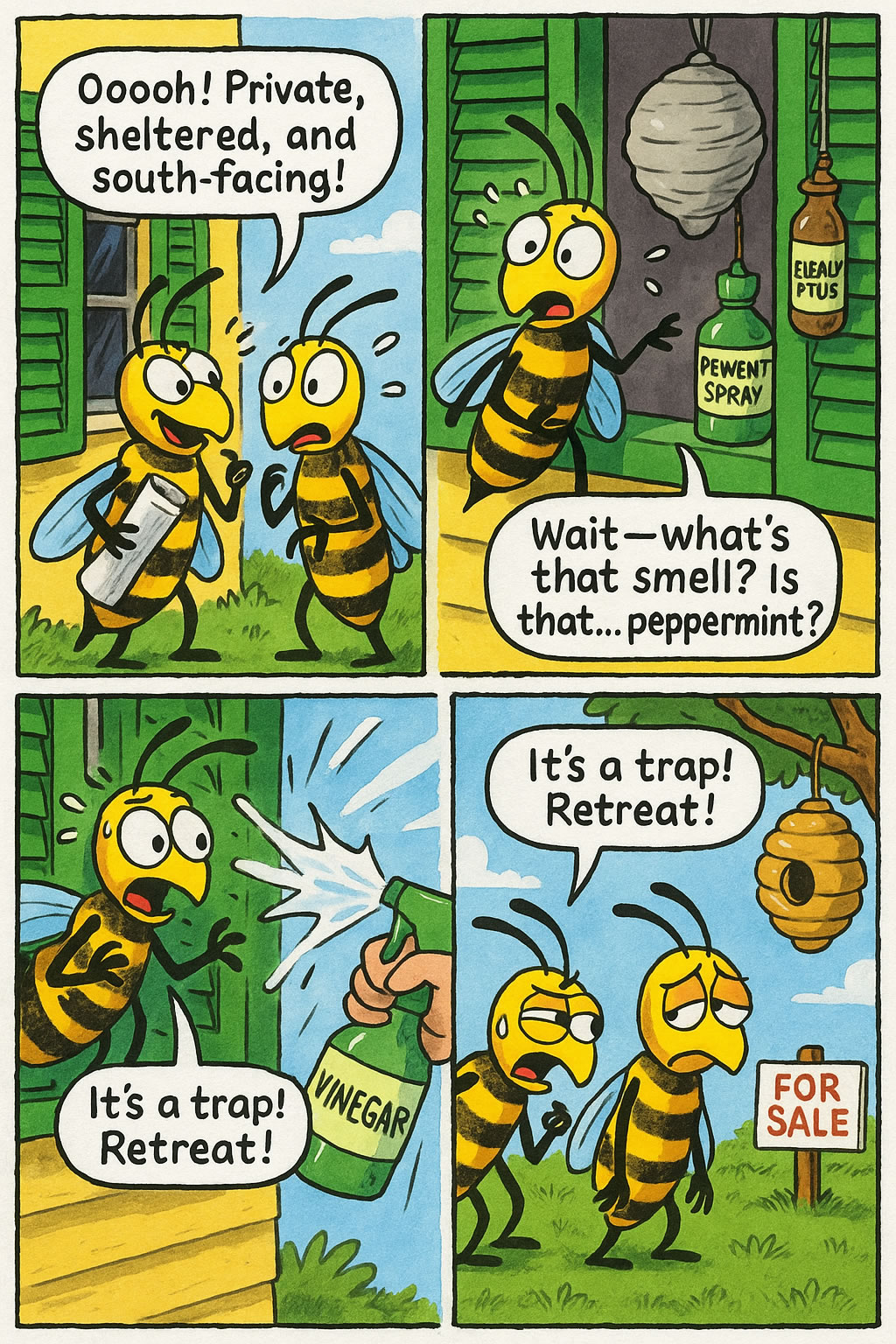Related Queries
ToggleDid you know that bees contribute £651 million to the UK economy annually—£150 million more than the Royal Family brings in through tourism? When it comes to wasp vs bee populations, the UK is home to an astounding 250 species of bees and 9,000 species of wasps, each playing unique roles in our ecosystem.
While both belong to the order Hymenoptera, these insects couldn’t be more different. Wasps are skilled hunters, capturing an estimated 14 million kilogrammes of insect prey each summer, however, bees focus on collecting nectar and pollen. In fact, the difference between a bee and a wasp extends beyond their diets—from their appearance to their behaviour and even their stinging capabilities.
We’ll explore these fascinating creatures’ distinct characteristics, helping you understand how to tell them apart and appreciate their individual importance in our environment.
Physical Differences Between Bees and Wasps
Telling the difference in a wasp vs bee encounter starts with understanding their distinct physical characteristics. Upon closer inspection, these buzzing insects reveal striking variations that set them apart.
Body Shape and Size: Round vs. Slender
Bees generally have plumper, more rounded bodies with thick middles, particularly noticeable in bumblebees. Conversely, wasps possess slender, elongated bodies with a distinctive narrow “waist” connecting the thorax and abdomen. This constricted waist, sometimes called a petiole, is a defining feature of the Hymenoptera order.
Size also varies considerably between species. Honeybees typically measure 10-15mm long, whereas wasps can range from 10-30mm in length, making many wasp species noticeably larger than their bee counterparts.
Fuzzy vs. Smooth: The Hair Factor
Perhaps the most obvious wasp and bee difference lies in their body covering. Bees have bodies densely covered in fuzzy hairs, which serve two crucial purposes: keeping them warm and collecting pollen. This fuzziness gives bees their characteristic soft appearance.
In contrast, wasps have smooth, shiny bodies with very few hairs, giving them a more sleek, glossy look. This difference isn’t merely aesthetic—it reflects their different ecological roles.
Colour Patterns and Markings
Although both insects display yellow and black patterns, their coloration differs distinctly:
- Bees typically feature more muted, brownish-yellow tones with darker bands
- Wasps display brighter, more vivid yellow markings with starker patterns
- Wasp stripes are more defined and pronounced than bee stripes
Some wasp species have distinctive markings, such as the “anchor” shape on common wasps’ faces.
Wing Structure and Position When Resting
Both insects possess two sets of wings, but with notable differences. Bee wings are shorter and more shapely, resting on top of the thorax when folded. Wasp wings are comparatively longer and more slender, running parallel to the abdomen when at rest.
Additionally, wasp legs tend to hang down during flight, creating another visual clue for identification. Bee legs are shorter and bulkier, designed for carrying pollen.
Behavioural Differences: How to Tell the Difference Between a Bee and a Wasp
Beyond their physical appearances, bees and wasps exhibit distinctly different behaviours that can help identify them in the field. These behavioural differences are often more reliable indicators than appearance alone.
Feeding Habits and Food Preferences
The primary difference between a bee and a wasp lies in their diet. Bees are essentially vegetarian, feeding predominantly on nectar and pollen collected from flowers. Some bees make honey from this nectar. Wasps, on the other hand, are omnivores with more varied appetites:
- Wasps hunt and kill other insects as food for their larvae, who then produce a sugary solution the adult wasps consume
- Throughout summer, worker wasps feed insects to their developing larvae, but in late summer, they seek sugary foods from fruits and human food waste
- Notably, each summer, social wasps in the UK capture an estimated 14 million kilogrammes of insect prey
Aggression Levels and Defensive Behaviours
Bees typically display docile behaviour unless threatened. Honeybees will only sting if they feel directly threatened or are protecting their colony, subsequently dying after stinging due to their barbed stinger.
Wasps, meanwhile, have earned their reputation for being more aggressive. They can sting repeatedly without dying because their stingers lack barbs. Even more concerning, wasp venom contains alarm pheromones that trigger nearby wasps to become more aggressive. This explains why swatting at one wasp often leads to multiple attacks.
Aggression levels in wasps peak toward late summer when their colonies collapse. At this point, worker wasps no longer have larvae to tend and become disoriented, leading to more interactions with humans as they desperately seek sugar sources.
Flight Patterns and Movement
Both insects employ systematic flight manoeuvres but with different purposes. Bees perform methodical learning flights when leaving their nest or food source, creating arcs centred around their goal. This behaviour helps them memorise landmarks for navigation.
Wasps display more erratic flight patterns. Particularly noteworthy is their “swarm feeding” behaviour—once a wasp discovers food, it returns to its nest to recruit others, leading to multiple wasps appearing rapidly at a food source.
Nesting and Habitat: Wasp and Bee Difference
The architecture of insect homes reveals yet another fundamental wasp vs bee distinction. The structures these buzzing creatures build tell a fascinating story about their biology and lifestyle choices.
Bee Hives vs. Wasp Nests: Construction Materials
The materials used by bees and wasps for their homes couldn’t be more different. Honeybees construct their nests from beeswax, which they produce themselves through special glands on the underside of their abdomen. This wax is formed into hexagonal cells arranged in vertical combs. Bumblebees similarly create wax cells but often incorporate moss or leaves into their nests.
Wasps, lacking wax glands, take a completely different approach. They manufacture a paper-like material by chewing wood fibres mixed with their saliva. This creates a pulpy mixture that, once dry, forms a surprisingly sturdy and waterproof structure. Upon close inspection, wasp nests have a distinctive grey, papery appearance with multiple layers and intricate internal structures.
Preferred Nesting Locations
Honey bees and wasps diverge significantly in their choice of home sites. Honey bees specifically require hollow cavities, preferring tree hollows or man-made hives. They never nest in the ground. Furthermore, honey bee colonies are perennial, with healthy nests remaining active for many years.
Conversely, wasps exhibit more varied nesting preferences:
- Paper wasps build open, umbrella-shaped nests under eaves and overhangs
- Hornets construct large football-shaped nests hanging from tree branches
- Yellowjackets often nest underground in abandoned rodent burrows
- Common wasps prefer sheltered locations like lofts, attics, or wall cavities
Unlike honey bees, most wasp species abandon their nests after one year since they follow annual life cycles. Only the fertilised queen wasps survive winter by hibernating, emerging in spring to start new colonies. This seasonal abandonment explains why wasps build new nests annually, unlike the more permanent bee colonies.
Stinging Capabilities: What’s the Difference Between a Wasp and a Bee
When it comes to their defensive arsenal, bees and wasps demonstrate striking differences in their stinging capabilities. These distinctions are critical for anyone who encounters these insects regularly.
One-Time vs. Multiple Stings
The most notable difference between a bee and a wasp relates to their stinging mechanism. Honeybees possess barbed stingers that remain embedded in the skin after stinging, causing the bee to tear away part of its abdomen, ultimately leading to death. Indeed, this sacrifice is exclusive to honeybees, as other bee species may have smooth stingers allowing multiple stings.
Wasps, nevertheless, have evolved a lance-like stinger without barbs. Consequently, they can pull out their stinger after an attack and sting repeatedly, making them potentially more dangerous in confrontational situations.
Venom Composition and Reaction Differences
Despite their outward similarities, bee and wasp venoms contain distinctly different chemical cocktails:
- Bee venom (apitoxin) primarily contains melittin (50-55% of dry venom), which breaks down cell membranes
- Phospholipase A, comprising 10-12% of bee venom, is considered its most harmful component
- Wasp venom contains “wasp kinin” peptides plus acetylcholine, which heightens pain
- Both venoms contain hyaluronidase, an enzyme that helps venom penetrate deeper into tissue
Additionally, wasps typically inject 2-15 micrograms of venom per sting, whereas bees deliver approximately 50 micrograms, though they can only do so once.
When and Why They Sting
Primarily, both insects sting defensively. Male bees and wasps cannot sting at all—this capability belongs exclusively to females. Honeybees generally sting only when they feel directly threatened or are defending their colony.
Interestingly, wasps become more aggressive toward late summer when their colonies start collapsing. Furthermore, wasp venom contains alarm pheromones that signal other wasps to attack, explaining why swatting at one wasp often results in multiple attacks.
The average human can withstand approximately 10 stings per pound of body weight before experiencing toxic effects. This means an average adult could theoretically survive over 1,000 stings, whereas 500 stings could be fatal for a child. For those with allergies, however, even a single sting might trigger a life-threatening anaphylactic reaction.
Comparison Table
| Characteristic | Bees | Wasps |
|---|---|---|
| Physical Appearance | ||
| Body Shape | Plump, rounded bodies with thick middles | Slender, elongated bodies with narrow “waist” |
| Body Surface | Densely covered in fuzzy hairs | Smooth, shiny bodies with few hairs |
| Colouration | Muted brownish-yellow tones with darker bands | Bright yellow with stark, defined patterns |
| Size | 10-15mm (honeybees) | 10-30mm |
| Wing Position | Rest on top of thorax when folded | Run parallel to abdomen when at rest |
| Behaviour | ||
| Diet | Vegetarian (nectar and pollen) | Omnivorous (insects and sugary foods) |
| Aggression Level | Generally docile unless threatened | More aggressive, especially late summer |
| Flight Pattern | Methodical, systematic learning flights | More erratic, swarm feeding behaviour |
| Nesting | ||
| Construction Material | Beeswax | Paper-like material (chewed wood fibres + saliva) |
| Nest Longevity | Perennial (honey bees) | Annual (abandoned after one year) |
| Preferred Location | Hollow cavities, never in ground | Varied (eaves, trees, underground, wall cavities) |
| Stinging | ||
| Stinger Type | Barbed (honeybees) | Smooth, lance-like without barbs |
| Stinging Capability | Once only (honeybees) | Multiple times |
| Venom Amount | 50 micrograms per sting | 2-15 micrograms per sting |
| Venom Components | Primarily melittin (50-55%) | Contains “wasp kinin” and acetylcholine |
Our Final Say!
Understanding the differences between bees and wasps proves essential for both safety and ecological awareness. Though these insects share common ancestry, their distinct characteristics set them markedly apart.
Physical attributes offer the first clue – bees sport fuzzy, rounded bodies suited for pollen collection, while wasps display sleek, elongated forms perfect for hunting. Their behavioural patterns tell an equally compelling story. Bees dedicate themselves to gathering nectar and pollen, contributing significantly to plant pollination. Wasps, acting as natural pest controllers, help maintain ecological balance through their predatory habits.
Nesting practices reveal additional contrasts. Bees craft intricate wax structures that often serve multiple generations, whereas wasps create temporary paper nests abandoned after a single season. Perhaps most significant for human interaction, their stinging capabilities differ substantially. Honeybees make the ultimate sacrifice with their single, barbed sting, while wasps can strike repeatedly with their smooth stingers.
Are you looking for pest control in Merseyside? Get in touch with us and a local pest removal company will be in touch.
These differences highlight how each insect fills a unique ecological niche. Bees excel as pollinators, contributing £651 million annually to the UK economy, while wasps serve as efficient pest controllers, capturing millions of kilogrammes of insect prey each summer. Together, they form an essential part of our natural world, deserving both our respect and protection.
Wasp Removal Derbyshire – Rat Infestation Nottinghamshire – Rat Infestation West Sussex
